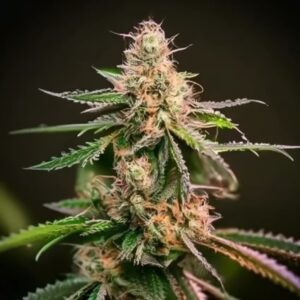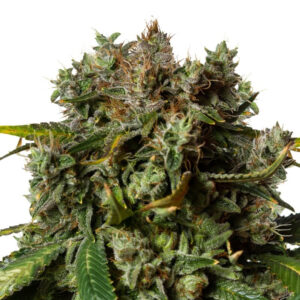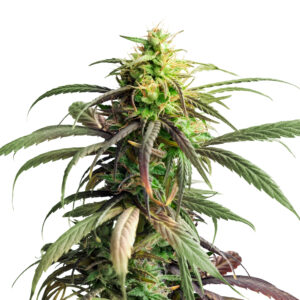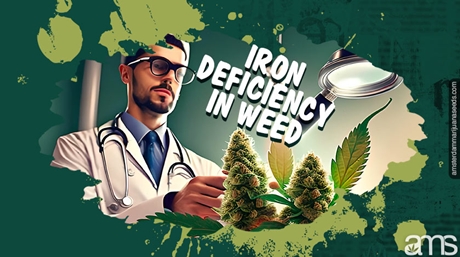Marijuana growers experience a wide variety of challenges during their growing journey. However, having little knowledge about research, these problems can be solved easily without much stress. One of these significant issues is Manganese deficiency, which has become a rampant case terrorizing cannabis growers.
Research has revealed that cannabis plants have become prone to Manganese deficiency, affecting many growers worldwide. Recently, this problem rarely occurred, and it was uncommon. However, the problem has been spotted by several marijuana growers in their plantations. The good thing is that this problem can easily be fixed and retain initial health.
This article incorporates the complete guide to identifying and solving Manganese deficiency in your cannabis plants. Let’s roll together!
Researchers have revealed that Manganese is a micronutrient that is immobile, although it facilitates numerous activities in the growth and development of cannabis plants. Photosynthesis is one of the important processes in the pot plants that is enabled with the aid of Manganese.
During the photosynthesis process in the weed plants, Manganese takes part in every stage of the process, beginning with the water-splitting reaction. It also takes part in other activities in the development of the plant, such as respiration and the absorption of nitrogen.
Chlorophyll composition is another aspect that requires the aid of Manganese and the catalysis of the enzymes produced by the cannabis plant. In addition, it takes part in the development of trichomes that aid by developing a barrier that prevents pests and other types of diseases.
The roots require Manganese to gain strength and the prevention against pathogens that alter the root system of the marijuana plant. Note that a particular plant’s root system is what matters for the remarkable growth and development of the entire plant.
Having read through the advantages that Manganese has on the growth and development of the cannabis plant, you will realize that lack of this nutrient can result in a terrible situation. This means that you should always watch keenly to ensure that your marijuana plants get all the micronutrients for steady growth.
However, many pot growers tend to mistake between Manganese and iron deficiency. So let’s clear the doubt between these two types of deficiencies.
Manganese and iron deficiency relate closely, and you can easily mistake one for another. Note that if your cannabis plant is suffering from Manganese deficiency and you make a mistake of treating iron deficiency, you will have worsened the Manganese deficiency.
This is because the higher availability of iron in the growth medium of the pot plant will block the entry of Manganese into the plant tissues. Therefore, the only major sign that differentiates between Manganese and iron deficiency is the discoloration of the leaves.
In Manganese deficiency, the leaf of the cannabis plants turns more yellow while the margin and the veins retain their dark green color. This condition is caused by many aspects revolving around the growth and development of the plant.
Sometimes you will realize that the plant did not get access to various nutrients completely, while in another case, the plant did not get enough of a certain nutrient. This is because the chances of overwatering are extremely high in the plants grown in the typical soil, which affects the root system of the cannabis plant.
The level of acidity and alkalinity is another major factor that should be considered when planting your weed plant. It is important to understand that plants require an environment with optimal levels of acidity and alkalinity.
Note that when the pH level is extremely high, the growth medium becomes more acidic. This locks the absorption of micronutrients resulting in Manganese deficiency. This condition might result in the death of your cannabis plant if not treated in time.
Manganese deficiency is hard to distinguish whenever it attacks your cannabis plants since it has clear signs. The condition begins by affecting the new growth since the Manganese nutrients do not move from one point to another.
When you observe your marijuana plants keenly, the Manganese deficiency begins by affecting the canopy of your pot plants. If you treat this condition immediately, you will note the signs on the older leaves of the cannabis plants, especially at the bottom.
You will realize that the new leaves are turning yellow between the veins. This condition is called interveinal chlorosis. It also leads to the formation of random spots on the plant leaves, indicating deficiency symptoms.
The edges of the marijuana leaves will turn dark green while the center turns yellow and the middle of the leaf veins. This condition transitions the dark green shade on the edge of the leaves.
You will identify brown spots that will spread throughout the leaves and end up covering the entire plant. This can end up destroying the whole pot plant within the shortest time possible.
When these signs persist, you will realize that the general growth and development of the plant are being affected. As a result, the cannabis plant may begin suffering from stunted growth, resulting in poor yields at the end of the process.
When these symptoms are completely done with the new leaves, they begin affecting the old leaves from the bottom of the cannabis plant. This is a clear indication that the deficiency is completely done with your pot plants and their chances of dying are incredibly high.
After identifying clear signs of Manganese deficiency within your weed plants, it is essential to ask yourself what might have caused the condition to your plants. It is a fact that there are various things associated with the symptoms discussed above.
Whenever you note the cause of Manganese deficiency, you will become an informed cannabis grower and identify how you can avoid the mistake you made. The last thing you should understand that Manganese deficiency occurs when the roots cannot absorb Manganese nutrients.
According to cannabis enthusiastic growers, this condition is referred to as Manganese lockout. This only occurs when the rate of acidity and alkalinity of the growing medium is either too high or below the required limits.
Note that the optimal levels of the acidity and alkalinity of the growth medium that supports Manganese absorption depend from one medium to another. This means you should have clear information about the growing medium you are using to avoid possible trouble.
Manganese can be absorbed better when growing cannabis plants in soil when the soil’s pH level ranges between 6.0 and 6.5. However, when using a soilless medium, the Manganese nutrients can be easily absorbed at a pH of 5.5 and 5.8.
Overwatering is also closely associated with Manganese deficiency. This is because a lot of water damages the root system and sometimes makes the roots of the marijuana plants rot, making it hard to absorb the Manganese nutrients.
After learning the cause of the Manganese deficiency in your cannabis plants, it is now time to treat your plants. According to the analysis, pH variation is the leading cause of Manganese deficiency so you should handle it carefully.
The best solution to fighting against Manganese deficiency is solving the issue of acidity and alkalinity in your growing medium. Note that you should only feed your pot plants with other supplements after sorting the case of PH levels since it can result in something else when not handled with proper care.
Acidity and alkalinity matters can be easily solved by flushing the root system of your plant with tepid water. Remember that the availability of iron in large amounts blocks the absorption of Manganese; flushing such minerals away is the best option in this case.
After you have flushed the cannabis plants and the excessive iron nutrients have been washed away, it is time to add micronutrient supplements to your marijuana plant. At this point, you should prioritize the micronutrients that contain Manganese.
Manganese chelates can work exceptionally at this stage of treating Manganese deficiency. Greensand can also work well, although it requires time since the absorption rate is extremely low. Before you begin the treatment, consider pruning any leaves with necrotic patches since they cannot recover even after the treatment.
Marijuana researchers say that the best way to replenish the levels of Manganese in your pot plants is through the application of foliar feed. This type of fertilizer has water with a high level of solubility and has a lot of manganese nutrients that the weed plants can absorb through the leaves.
This type of water fertilizer can be any type of special fertilizer or even water that is mixed with other types of nutrients. The water is then sprayed on the plants using a spray bottle. Compost can also work better in this matter, but its level of absorption is hugely lower.
As the adage goes by, prevention is better than cure; this is the best way to go about it. To prevent any instance of Manganese deficiency in your cannabis plants, maintain a steady lookout on the pH level of your growing medium. To be more careful about this matter, you can acquire a simple pH meter to be accurate with the information you want.
Also, ensure that your marijuana plants have proper drainage and water is not settling at the base of the pants since it will affect the root system. Consider checking the overwatering issue since it has numerous adverse effects on the well-being of your cannabis plants.
Besides, consider adding micronutrients in the watering water whenever the need arises. This will supply your plants with a uniform layer of nutrients that are well balanced, enhancing steady growth. This will also ensure that the root system of your marijuana plant is up to the task of absorbing essential nutrients from the soil.
Even though Manganese deficiency is not commonly experienced, it is important to be careful since its effects are severe. This article has a detailed outline of the symptoms of Manganese deficiency and how the defect can be solved. It is important to remember that prevention is better than cure.













Related Posts

Iron might be considered only a trace of nutrients on the cannabis plants, but its absence can be easily identified due to its impact on the growth and development of the cannabis plant.

Like human beings who require nutrients for survival, it is the same way the cannabis plant does. The weed plant needs various nutrients for steady growth and development. However, the acidity and alkalinity of the nutrients, water, and soil have a significant impact on the well-being of the cannabis plant.

Like us, plants need nutrients to live. So do your weed plants. The crop requires nutrients to germinate, vegetate, flower, and fight off pests and diseases. We have several kinds of crucial nutrients that your weed crop needs. The nutrients are classified into macronutrients and micronutrients.